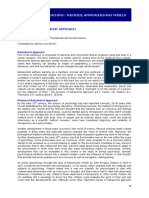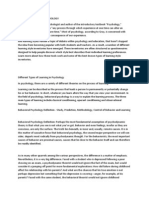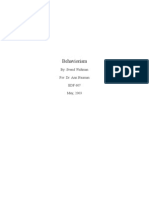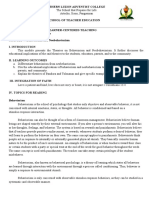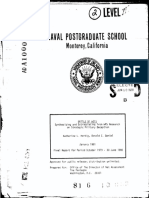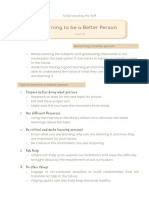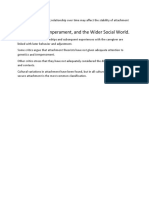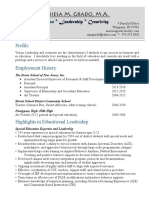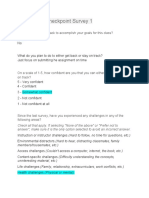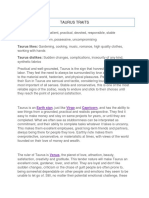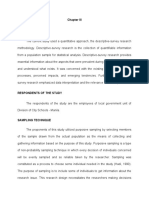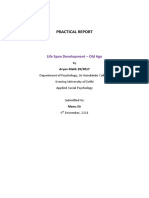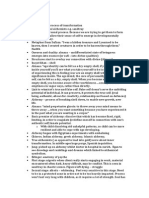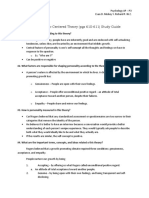0% found this document useful (0 votes)
142 views15 pagesUnderstanding Behaviorism Basics
This document provides an overview of behaviorism and its key figures and concepts. It discusses:
- The basic assumptions of behaviorism including parsimony and associationism.
- John B. Watson's behaviorism which focused on observable behaviors and rejected mental concepts. He described four types of behaviors.
- Criticisms of Watsonian behaviorism including its restriction of psychology and use of reductionism.
- Ivan Pavlov's classical conditioning experiments with dogs which demonstrated that neutral stimuli can become conditioned through repeated pairing with unconditioned stimuli to elicit involuntary responses.
Uploaded by
Tanishka ChawhanCopyright
© © All Rights Reserved
We take content rights seriously. If you suspect this is your content, claim it here.
Available Formats
Download as PDF, TXT or read online on Scribd
0% found this document useful (0 votes)
142 views15 pagesUnderstanding Behaviorism Basics
This document provides an overview of behaviorism and its key figures and concepts. It discusses:
- The basic assumptions of behaviorism including parsimony and associationism.
- John B. Watson's behaviorism which focused on observable behaviors and rejected mental concepts. He described four types of behaviors.
- Criticisms of Watsonian behaviorism including its restriction of psychology and use of reductionism.
- Ivan Pavlov's classical conditioning experiments with dogs which demonstrated that neutral stimuli can become conditioned through repeated pairing with unconditioned stimuli to elicit involuntary responses.
Uploaded by
Tanishka ChawhanCopyright
© © All Rights Reserved
We take content rights seriously. If you suspect this is your content, claim it here.
Available Formats
Download as PDF, TXT or read online on Scribd
/ 15











